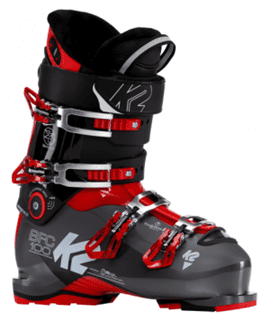In my opinion ski boots are the most essential piece in the kit. Skis, poles, clothing: I can make do with not a perfect fit. Anything but my customized boots hurt – I whine all day long – and make it hard to keep toes warm, causing me to whine even more.
by Ryan Stuart, technical editor
Luckily boot makers are with me on this one. Most boots above entry level come with heat moldable liners. A couple minutes in an oven, followed by 15 on the foot and they’re shaped exactly to my overly wide forefoot and super narrow heel. Add an after market footbed – the ones that come with most boots suck – and you’re set.
Well almost. Every boot maker uses a slightly different last, a model foot to shape their boots to. In an ideal situation heat molding can adjust about a centimetre in width. So while a lot of boots will fit a lot of feet, not every foot will fit every boot.
Before going boot shopping here are some things to think about.
Do a little research
But just a little. When I ask retailers and manufacturers about the value of boot reviewing they say the same thing. There’s no point. It’s all about fit, which is individual. So don’t put too much stock in using a review to choose which boot to buy, but go ahead and learn about the latest crop of boots. Consider some of the features and construction techniques. Two examples, K2 is introducing built in heat in some of its boots like the BFC 100, pictured, and Lange introduces one with a dual density shell that promises to transfer energy better.
Find a good shop
A good boot fitter doesn’t need to advertise. Word of mouth does it for them, because they are few and far between and highly valued. If you don’t already know one ask around – ski patrol and snow school instructors are a good place to start. Once you’ve found one call ahead. Find a day when the fitter is working and ask about quieter times. Cross reference that with when you have plenty of time. Ideally it will be later in the day when you’re feet are at their widest. Bring a pair of ski socks, a footbed and maybe your old boots.
Know the lingo
A few key words to understand.
shell: the hard plastic outer part of the boot
liner: the softer inner boot
last: the model of foot shape the manufacturer uses to create the liner shape
last width: the approximate width of the boot in millimetres. Usually somewhere between 93 and 105 it gives you a rough idea of how the boot will fit.
arch height: how tall your foot is or how much volume vertically in a last
stiffness: referenced in most boots, it is a non-standardized measure of how hard it is to flex the upper cuff of the boot. A typical range is 70 for a kids boot to 130 for an expert adult boot. Because there is no standard to base it on it is a rough gauge only.
Expect service
Before you start trying on boots a good boot fitter will look at your feet, measure them, check out your old boots, etc. They should have a pretty good idea of what boots will fit you just by sight. Next you’ll probably try on just the shell with no liner and then finally the whole boot. If you don’t get this kind of service you probably want to find another boot fitter.
If you go through this process and can’t find a pair that fits count yourself special and check out our Boot Buying advice Part 2 for Problem Feet – coming soon.
RYAN REPORT is a frequent web post by Ski Canada magazine’s technical editor, Ryan Stuart.




